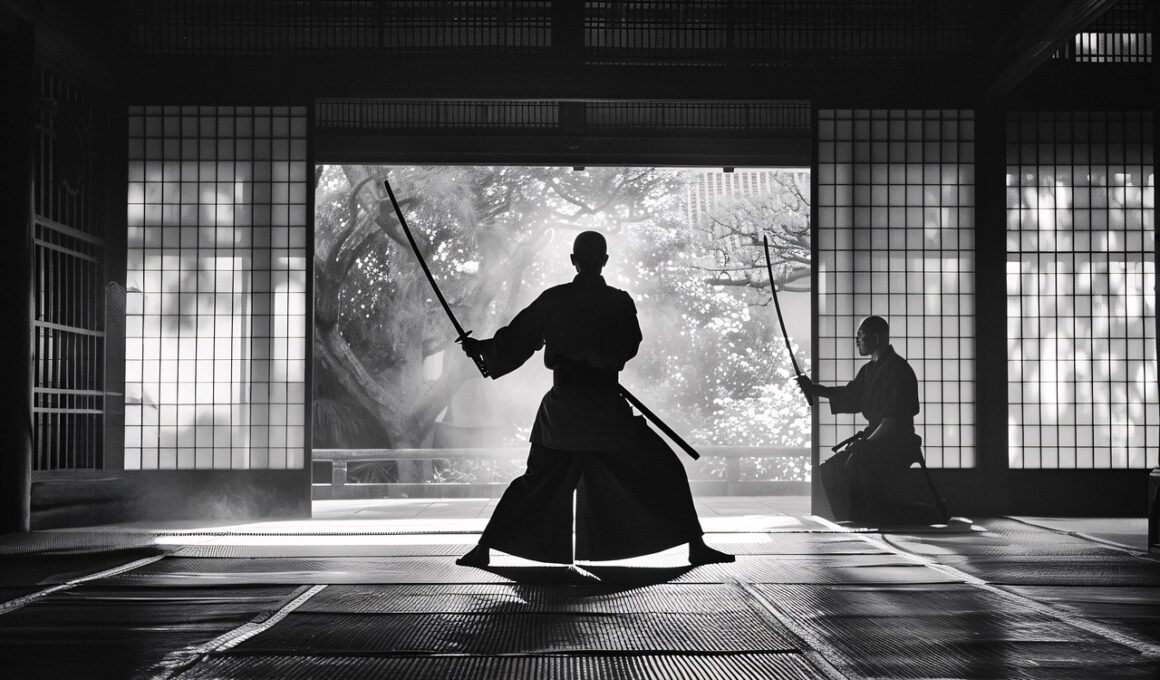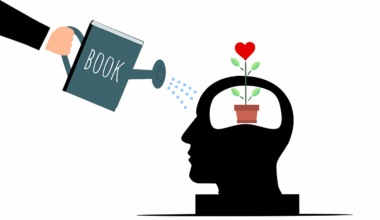How to Use Martial Arts Forms (Kata) to Improve Balance
Martial arts forms, or kata, are structured sequences of movements that can significantly enhance one’s balance and coordination. Practicing kata allows martial artists to develop muscle memory, improve body awareness, and refine techniques. When executing these forms, focus on the alignment of your body, ensuring that every movement is purposeful and controlled. Engage your core for stability and maintain a strong base, which is essential for executing techniques effectively. This practice not only sharpens skills but also fosters mental concentration. As you repeat these movements, remain mindful of your posture, as this will help in finding your center of gravity. Good posture contributes to overall balance, which is fundamental in various martial arts. Each technique in kata is designed to challenge your balance in different ways, from stances to dynamic movements. Therefore, integrating kata practice into your routine is invaluable. In addition to balance, kata also enhances coordination, as the brain learns to synchronize movements with breathing. Thus, martial arts forms serve as an excellent tool for personal development in both physical and mental aspects.
When proper techniques are emphasized during training, the benefits of kata can be further amplified. Precision is crucial when practicing kata, and this precision directly affects the balance and coordination you develop. By focusing on the exact placement of each foot and hand during movements, practitioners can train their muscles to respond better during sparring sessions. Moreover, the rhythmic nature of kata encourages the use of breathing techniques, which help maintain calmness and stability during practice. Correct breathing fosters a sense of flow and continuity in your movements, which is vital when transitioning from one technique to another. As a result, mastering these elements requires patience and dedication, but the payoff is a marked improvement in your martial arts performance. Many martial arts schools emphasize the importance of kata not just as a means of self-defense but also as a method for personal growth. This explains why kata is often a fundamental component of martial arts training. Keeping a consistent practice schedule is beneficial for reaping these rewards fully.
Understanding the Role of Balance in Martial Arts
Balance plays a critical role in martial arts, influencing every movement and technique. Excellent balance is essential not only for executing strikes but also for defense and mobility. Practitioners who have better balance can react swiftly to opponents’ actions. Consequently, those who incorporate kata into their training can markedly improve their balance over time. Each kata requires the martial artist to shift weight, pivot, and control their center of gravity. As the practitioner performs these movements repetitively, they become more adept at maintaining balance under various conditions. This skill translates seamlessly into sparring scenarios where dynamic movements are prevalent. Furthermore, working on balance enhances overall body awareness, allowing practitioners to understand their limits and capabilities. The more precise the execution of kata, the stronger the foundation for performing advanced martial arts techniques. This foundational balance becomes even more critical when faced with unexpected challenges or opponents. Therefore, the significance of practicing kata cannot be overstated in the context of balancing and coordination.
While practicing kata, it’s beneficial to become aware of the physical sensations associated with balance. Pay attention to how your body feels as you shift your weight from one foot to another. Mentally revel in the challenge of remaining balanced while executing complex techniques. Such awareness cultivates a deeper understanding of one’s physical capacity and enhances control over movements. Moreover, filming your kata practice or training with a partner can provide insightful feedback. Visual or verbal feedback aids in correcting balance-related issues effectively. Additionally, continually assessing your posture and body position during kata is vital for gauging your progress. Many martial artists find that incorporating functional strength training exercises complements their kata practice remarkably well. Strengthening core muscles contributes to enhanced stability during performance. This integration of strength training and kata practice fosters resilience in various forms of martial arts. Therefore, concerning balance, the synergy among techniques, awareness, and physical conditioning can lead to successful outcomes during training.
How Kata Affects Coordination
Coordination is equally essential in the practice of martial arts, as it affects how the body moves through space effectively. Kata training emphasizes coordination by requiring simultaneous movement of arms, legs, and the torso. This multifaceted approach ensures that muscles work in harmony, improving overall agility and fluidity in movement. Each kata comprises intricate patterns that must be performed with accuracy and timing. This not only sharpens martial arts techniques but also develops neuro-muscular responses. The synchronization of movements enhances reflexes, leading to smoother, more controlled actions during sparring or competition. Furthermore, kata teaches sequential movement, where the execution of one technique relies on the successful completion of another. Practicing this sequence helps train the brain to anticipate movement patterns. The quicker the practitioner can execute forms, the better their coordination becomes. As with balance, heightened awareness gained through kata improves synaptic communication within the brain. This increased mental connection contributes to enhanced performance across all areas of martial arts.
An essential aspect of mastering kata is understanding how breathing influences movement. Coordinating breath with each step or action can enhance strength and stability. Inhaling and exhaling at the right moments helps regulate energy expenditure, facilitating smoother motions. During intense sequences of kata practice, controlled breathing fosters relaxation, which is paramount for maintaining balance and coordination. Many martial artists combine breathing techniques with visualization strategies for maximum effect. For example, envisioning the flow of energy during kata aids in maintaining focus and poise. Moreover, practitioners can experiment with various speeds during training. Performing kata at different tempos allows martial artists to explore different aspects of both balance and coordination. These variations challenge the body’s ability to adapt, enhancing muscle responsiveness. Engaging in slow practice sharpens attention to detail, while faster execution tests reflexes and overall coordination. Therefore, experimentation in training remains beneficial for continuous improvement in balance and coordination.
Conclusion: The Holistic Benefits of Kata Practice
The holistic benefits of kata practice in martial arts underscore its importance in developing balance and coordination. Practicing kata effectively combines physicality with mental discipline, leading to improvements that extend beyond martial arts. Students often find that the principles learned in kata can apply to daily life as well. Enhanced balance and coordination translate to improved agility in everyday activities such as walking, running, or even playing sports. Additionally, the focus required during kata fosters mental clarity, allowing practitioners to better manage stress and anxiety. Thus, martial artists become more resilient both physically and mentally. By integrating kata into regular training, martial artists create a foundation for continuous improvement and growth. With patience and persistence, the benefits become evident over time. Therefore, practitioners are encouraged to dedicate time to kata practice consistently. The journey toward mastering kata is an ongoing one, filled with opportunities to discover new aspects of balance and coordination. As practitioners evolve in their martial arts journey, so too do their skills and understanding, leading to a more profound mastery of their art.
In conclusion, martial arts forms, or kata, serve as a powerful tool for enhancing balance and coordination. The structured nature of kata allows practitioners to focus on their movements and breathing, enriching their martial arts experience. Practitioners should embrace the holistic nature of kata, appreciating its value not just in self-defense but also in personal growth and development. By integrating kata into everyday practice, martial artists can create lasting change, developing skills that reinforce a strong foundation for further learning and exploration within their chosen martial art. Whether you’re a beginner or an advanced practitioner, remember that commitment to kata can yield rewarding outcomes over time, improving both physical and mental aspects of your martial arts practice.


